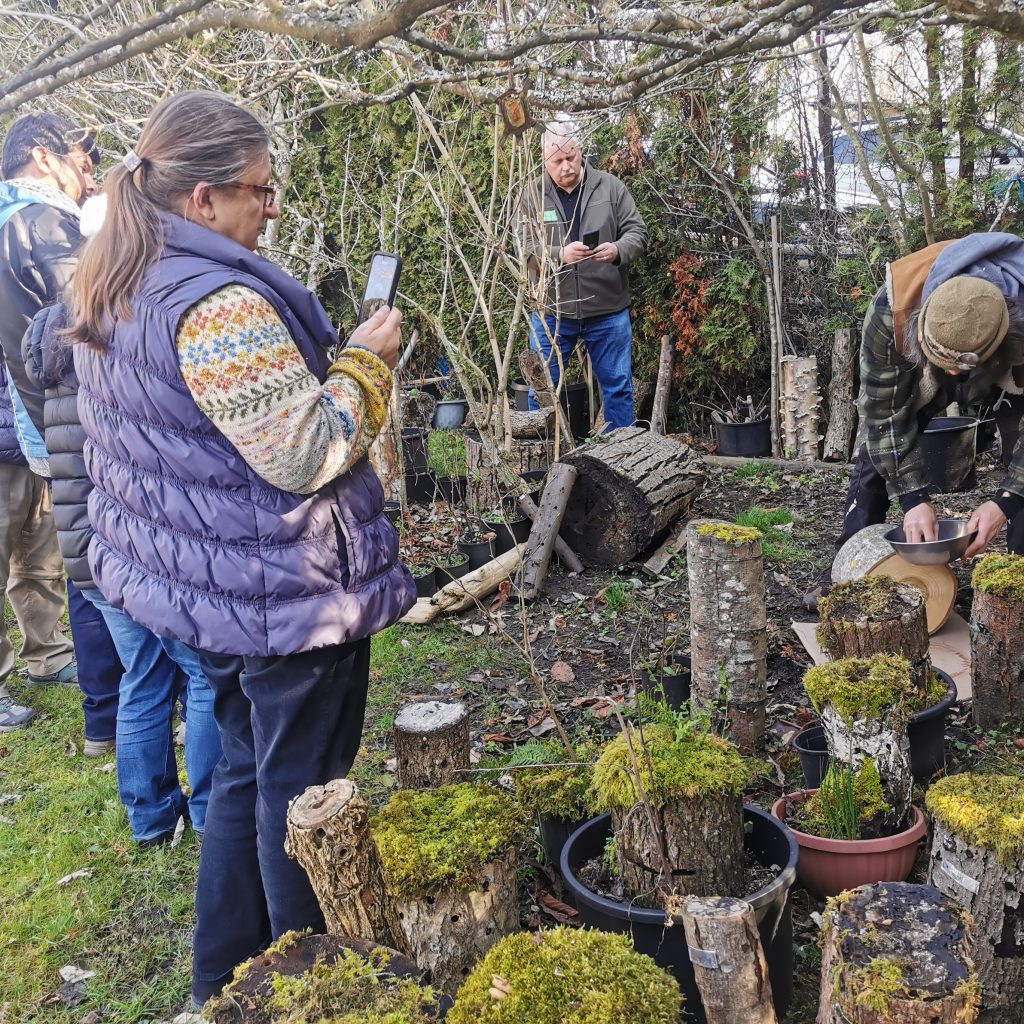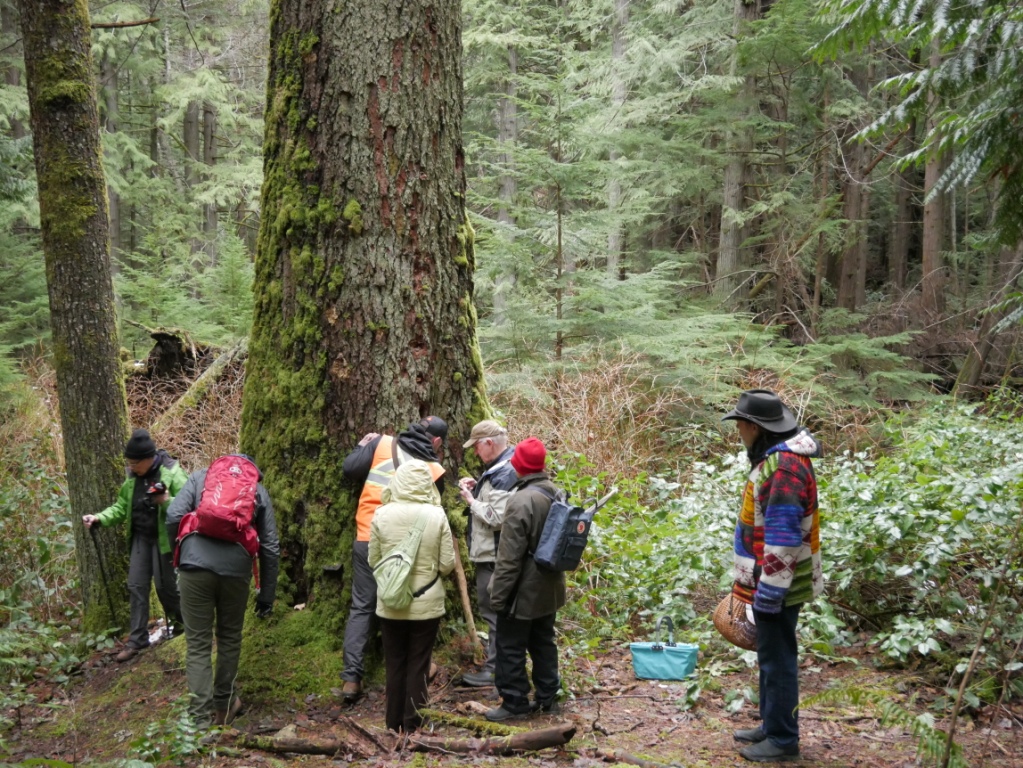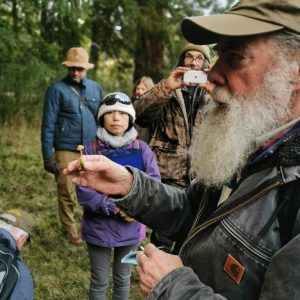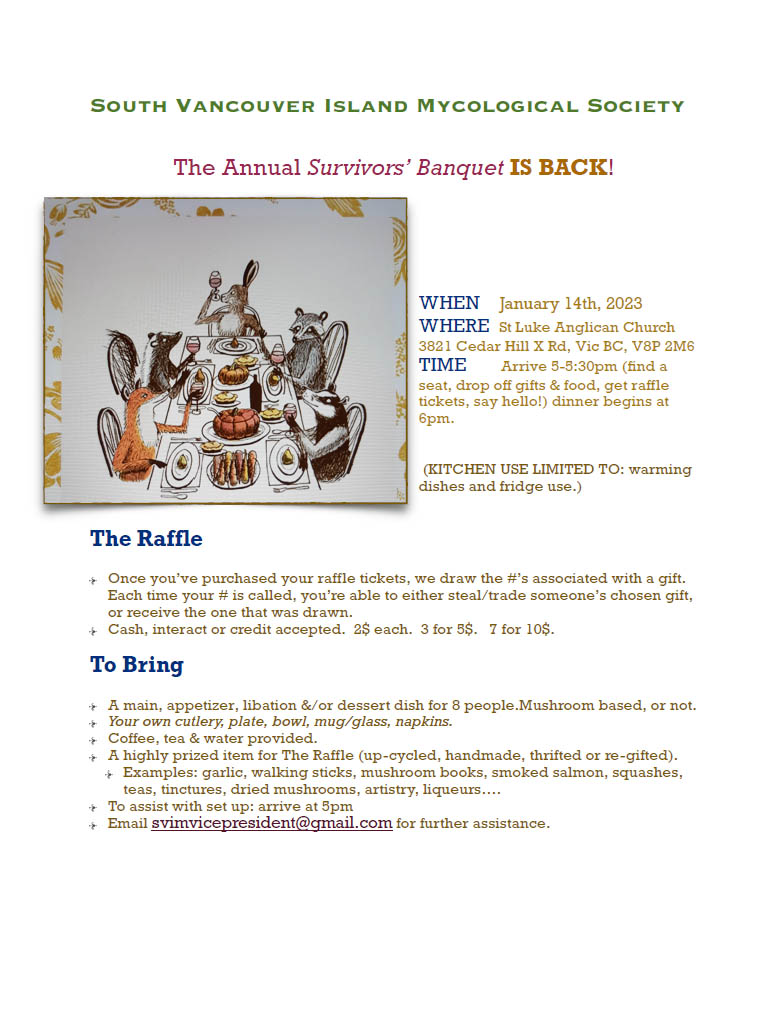In this talk: Tyson will provide an overview of the biology of myxomycetes, their morphology, life history, and habitats. He will discuss collection and storage techniques and cover the major taxonomic groups with photographs and tips for identification.
A zoom link has been sent (March 13) to SVIMS members by e-mail. There is no in-person meeting. Starting time for the zoom meeting is 6:45 pm.
Tyson Ehlers is a forest ecologist and biologist from the Slocan Valley, BC. His taxonomic interests are varied and tend toward the overlooked and understudied, which naturally led him to devote much of his time to studying fungi. He is an avid mushroom collector and photographer and strives to document the diversity of macrofungi in BC and has worked on numerous mycological research projects.
Along with his scientific interests, Tyson guides mushroom forays, advocates for the conservation of wild mushroom habitat, and has coauthored a book, Mushrooms to Look for in the Kootenays.
Like many who spend their time looking for fungi, slime moulds inevitably caught his attention. But there wasn’t much information available to learn more about these strange creatures and they remained an enigmatic curiosity. Somehow this passing interest became an obsession and for the past several years Tyson has devoted his time to the slime. He has been collecting and learning about slime moulds and is collaborating with other BC myxo-enthusiasts to produce a baseline inventory and guidebook for the slime moulds of BC.
Background. Slime moulds are not fungi, but they have traditionally been studied by mycologists because they look similar and occupy many of the same habitats. Commonly referred to as plasmodial slime moulds, myxomycetes are amoeboid eukaryotes which produce macroscopic fruiting bodies with a relatively complex structure. They are unicellular organisms which have demonstrated remarkable abilities, such as solving mazes, and “learning” in the absence of a nervous system. Slime moulds have little economic value, they are not an important source of food or medicine, and they are challenging to find and hard to identify. But they are exquisite life forms, and perhaps that is their main attraction.
Myxomycetologists are few and far between. There are only a handful in Canada and here in BC there are only three of us giving myxomycetes serious attention. There are few regional guides to aid in identification, and it has been said that knowledge of myxomycetes is equivalent to that of fungi 30 years ago. But the myxo-revolution is spreading, aided by advances in extreme macrophotography that is revealing the elegant beauty of these extraordinary creatures. Highly skilled professional photographers are publishing award-winning photographs in a variety of media, winning over legions of new fans.
Internet forums, like the Slime Mould Identification and Appreciation Facebook group and iNaturalist provide a venue for information sharing. And for the first time ever, slime moulds are included in the General Status of Species in Canada in the recent Wild Species 2020 report.
With just over 1000 species described worldwide, it would seem a simple task to inventory myxomycetes nation-wide. But most of
them are tiny and not easy to find or identify and few individuals have historically contributed to building an inventory. In BC alone, there were fewer than 100 species to be found in provincial herbaria prior to our work. In the past few years, we have now documented over 200 species in BC, many of which are new records for Canada, some new to North America, and at least one new undescribed species.
















